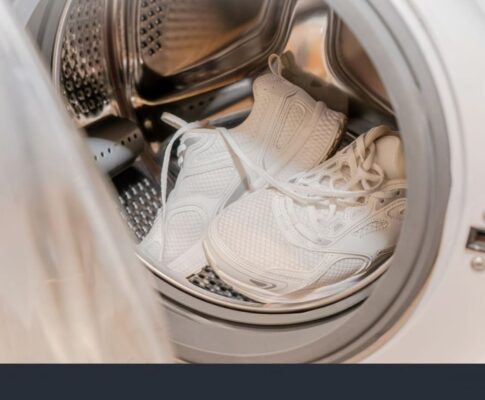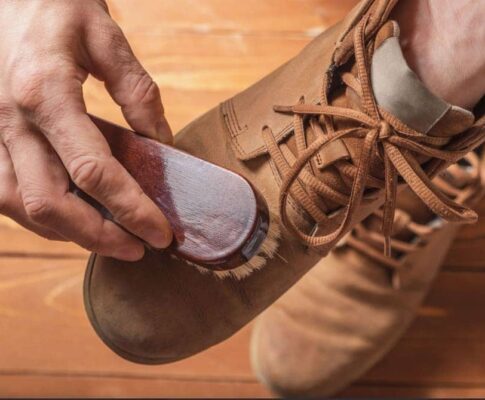
Our daily lives depend on stretch shoes, and finding the ideal pair can often feel like a triumph. However, excessively tight shoes can make even the most stylish shoes uncomfortable. You can prevent blisters, pain, and needless stress on your feet by learning how to stretch your shoes, regardless of whether you recently purchased a slightly tight pair or your favorite stretch shoes have shrunk over time.
The good news? There are some methods for improving the comfort of tight shoes without causing any harm. This guide will teach you all you need to know about safely and effectively stretching shoes, from professional stretching equipment to do-it-yourself home solutions.
Why It’s Important to Your Stretch Shoes
It helps to know why shoe stretching is important before getting into techniques. Not only can wearing tight stretch shoes be uncomfortable, but it can also eventually result in more severe foot issues like:
- Calluses and blisters
- Toenail ingrown
- Bunions and corns
- Decreased blood flow
- Chronic foot pain or abnormalities
What kinds of shoes are suitable for stretching?
When it comes to stretching, not all shoes are made equal. Certain materials react more effectively than others. This is a summary:
- Shoes made of leather: One of the easiest materials to stretch is leather. It is perfect for stretching because heat and pressure cause it to soften and expand.
- Shoes made of suede stretch well, but they need special attention to prevent damage.
- Shoes made of canvas: Canvas can stretch and has some flexibility, but not as much as leather.
- Synthetic shoes: Shoes composed of plastic materials are more difficult to stretch, although minor adjustments can still be made.
- Shoes made of patent leather are stretchable, but the glossy finish makes them brittle, so care must be taken.
How to Stretch Shoes: The Best Methods
The best methods for all of the stretch shoes at home or with expert assistance are as follows:
1. Make use of a shoe stretcher
One of the most dependable devices for stretch shoes is a shoe stretcher. To enlarge the toe box, length, or particular pressure points, these devices are inserted inside the shoe and expanded.
How to use stretcher shoes:
- Put the shoe inside the stretcher.
- To gradually expand it, turn the handle.
- For six to eight hours or overnight, leave it in the shoe.
- If necessary, repeat after testing the fit.
2. Use the Heat Method and Wear Thick Socks
This technique is especially effective on leather and suede footwear.
Actions to take:
- Put on some heavy socks.
- Put the tight shoes on.
- Warm up confined spaces with a blow dryer set to medium heat for 20 to 30 seconds.
- As the shoes warm up, move your feet around inside them.
- Continue wearing them until they become cool.
3. Set your stretch shoes to Freeze
Although it may seem that stretch shoes composed of natural materials like leather or fabric can be stretched by freezing.
Actions to take:
- Pour water halfway into two plastic bags that can be sealed.
- Focus on the tight spots when inserting the bags into the shoes.
- Overnight, place the shoes in the freezer.
- The water expands and stretches the shoe as it freezes.
- Take the bags off and check the fit.
4. The Stuffing Method
You can use common objects to stuff your stretch shoes if you don’t have any special tools.
Actions to take:
- Use newspaper (slightly damp works best), rags, or socks.
- Tightly pack them inside the shoe.
- Spend the night away.
- Take them out and give them a try the following day.
5. Expert Stretching for Shoes
The best course of action if your stretch shoes are pricey or fragile is to have them cobbled. Stretching machines and sprays made especially for various shoe materials are used by professional cobblers.
6. Alcohol Rubbing Spray
Alcohol aids in the relaxation and softening of the shoe material.
Actions to take:
- In a spray bottle, combine equal parts water and rubbing alcohol.
- Avoid soaking the insides of the shoes by spraying them.
- Until they dry, wear them with socks.
7. Stretching Spray for Shoes
The purpose of commercial shoe stretch sprays is to relax the fibers without causing any harm to the shoe.
Actions to take:
- Spray both the exterior and interior of the constricted areas.
- Wear the shoes for half an hour and put on thick socks.
- Continue as necessary until the fit is what you want.
How Much Time Is Needed to Stretch Shoes?
The technique and type of shoe determine how long it takes:
- 6–24 hours with a shoe stretcher
- Method of heat and socks: Instant to several hours
- Overnight in the freezer method
- Method of stuffing: overnight to two days
- Professional stretching typically lasts between 24 and 48 hours.
How Much Can You Stretch Your Shoes?
- Length: No more than half a size
- Breadth: Up to a full size larger
- Targeted areas: Sufficient to alleviate pressure or pinching
Advice for Avoiding Future Shoe Tightness
- Purchase shoes later in the day when your feet are at their largest because they swell throughout the day.
- When trying on shoes, wear the proper socks. This is especially crucial for athletic or boot shoes.
- Be aware of your measurements; width and length are important.
- Break them in gradually by wearing new shoes for brief periods of time at home before using them for longer.
- Proper shoe storage involves using shoe trees to keep shoes in shape and stop them from shrinking.
Avoid these common mistakes when stretching your shoes.
- applying excessive heat, which can melt glue or crack leather.
- Putting too many water bags in stretch shoes(risk of bursting).
- applying harsh chemicals that aren’t meant for footwear.
- Excessive stretching can harm the shape or stitching.
Conclusion
Stretching shoes is a useful technique that can increase comfort and prolong the life of your stretch shoes. There is a solution for practically every tight shoe situation, whether you decide to visit a professional cobbler, purchase a shoe stretcher, or use a do-it-yourself technique like the freezer trick.
Patience is essential; stretching shoes gradually guards against damage while making sure your feet are comfortable and supported. You can make uncomfortable stretch shoes into your favorite pair without having to buy pricey new ones if you follow the correct technique.





Pingback:How to Lace Dress Shoes: A Complete Guide to Style, Comfort, and Elegance - Shoesidea
Pingback:How to Clean Converse Shoes: The Ultimate Guide to Keeping Your Sneakers Fresh - Shoesidea